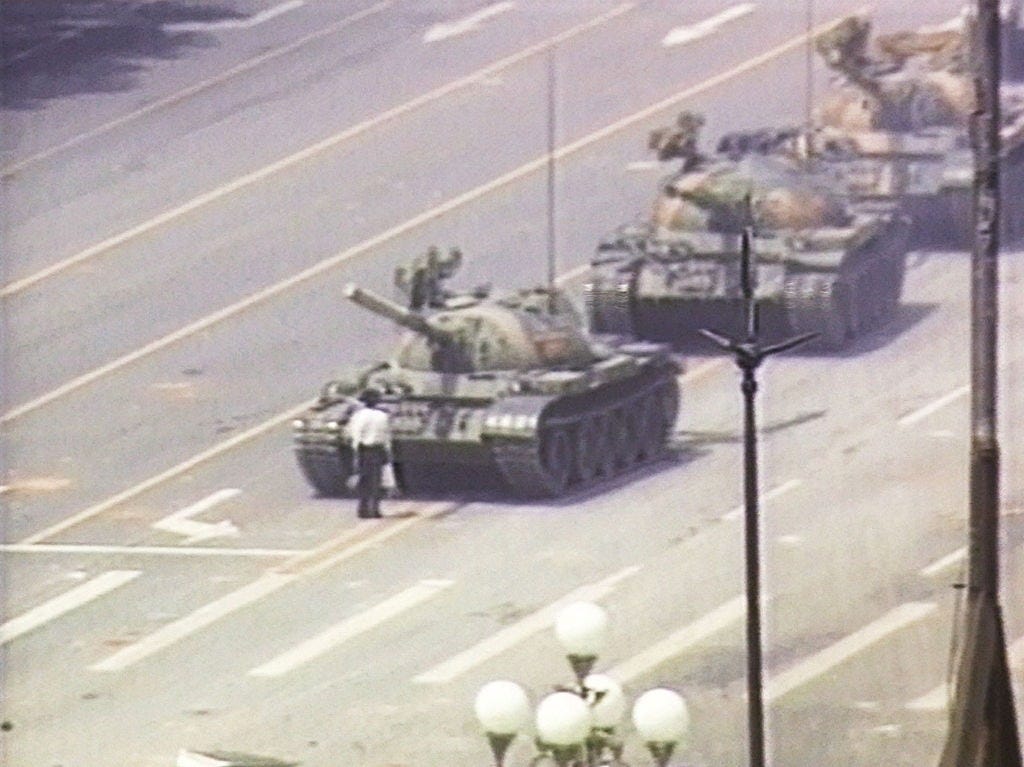Our icons
Which images of protest will define this era -- for us, and generations to come?
On June 5, 1989, the day following the violent crackdown on pro-democracy demonstrators in Beijing’s Tiananmen Square, multiple photographers captured a shot of a single protestor, known only as the “Tank Man” (he remains anonymous to this day), facing down an armored column. The photo (actually there were six, taken from slightly different angles by Jeff Widener, Stuart Franklin, Charlie Cole, Arthur Tsang Hin Wah, Sin Wai Keung, and Terril Jones, plus broadcast stills) has become an iconic image of political protest around the world, a universal symbol of the resolve of the people in the face of insurmountable odds; in China, however, it is largely unknown, erased from the public record, and made invisible by censors ever since, for fear of what it might inspire, such is the power of an image.
Images of protest do have real power. The publication of Charles Moore’s photos of a police dog attacking a teenager in Birmingham, Alabama, in 1963 led to the firing of segregationist Eugene “Bull” Connor. Peter Magubane’s photos of the Young Lions protests in Johannesburg were instrumental in mobilizing international pressure against apartheid. Josef Koudelka’s documentation of the invasion of Czechoslovakia that ended the Prague Spring of 1968 alerted the West to the fragility of the Soviet empire and helped create the idea of a political “Spring” around the world.
As the citizens of the United States face and begin to process living under a government that’s willing to set its military on its own people, where are the iconic images of this era? Who’ll inspire us, and how will they be remembered?
Read on below for some early contenders — and why we think they might last.



